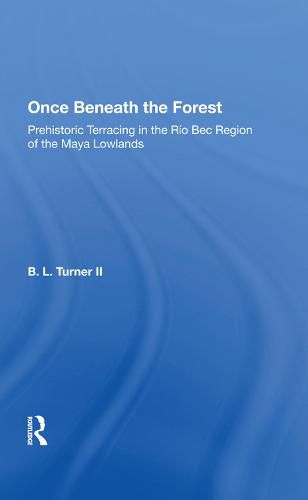Readings Newsletter
Become a Readings Member to make your shopping experience even easier.
Sign in or sign up for free!
You’re not far away from qualifying for FREE standard shipping within Australia
You’ve qualified for FREE standard shipping within Australia
The cart is loading…






My interest in ancient Maya agriculture began late in the year of 1971 when William M. Denevan encouraged me to pursue the topic. Our interests had been perked by reports from Joseph W. Ball, JaCk Eaton, and Irwin Rovner of the presence of terrace-like features throughout the Rio Bee region of the soutnern Yucatan Peninsula. Denevan maintained a long-term interest in pre-Hispanic agriculture and population in the New World. Our studies with the emerging Rio Bee research group at the University of Wisconsin led to the conclusion that the then dominant themes of Maya agriculture were in need of reevaluation and that a number of remains of intensive forms of agriculture were likely to be found in the Central Maya lowlands of Mexico, Peten (Guatemala), and Belize, particularly wetland or raised fields in addition to the reported terraces. Our interests were heightened at this time by notification from Alfred Siemens of the finds of wetland fields in the vicinity of the Rio Bee region in the Chetumal, Mexico-northern Belize area.
$9.00 standard shipping within Australia
FREE standard shipping within Australia for orders over $100.00
Express & International shipping calculated at checkout
My interest in ancient Maya agriculture began late in the year of 1971 when William M. Denevan encouraged me to pursue the topic. Our interests had been perked by reports from Joseph W. Ball, JaCk Eaton, and Irwin Rovner of the presence of terrace-like features throughout the Rio Bee region of the soutnern Yucatan Peninsula. Denevan maintained a long-term interest in pre-Hispanic agriculture and population in the New World. Our studies with the emerging Rio Bee research group at the University of Wisconsin led to the conclusion that the then dominant themes of Maya agriculture were in need of reevaluation and that a number of remains of intensive forms of agriculture were likely to be found in the Central Maya lowlands of Mexico, Peten (Guatemala), and Belize, particularly wetland or raised fields in addition to the reported terraces. Our interests were heightened at this time by notification from Alfred Siemens of the finds of wetland fields in the vicinity of the Rio Bee region in the Chetumal, Mexico-northern Belize area.